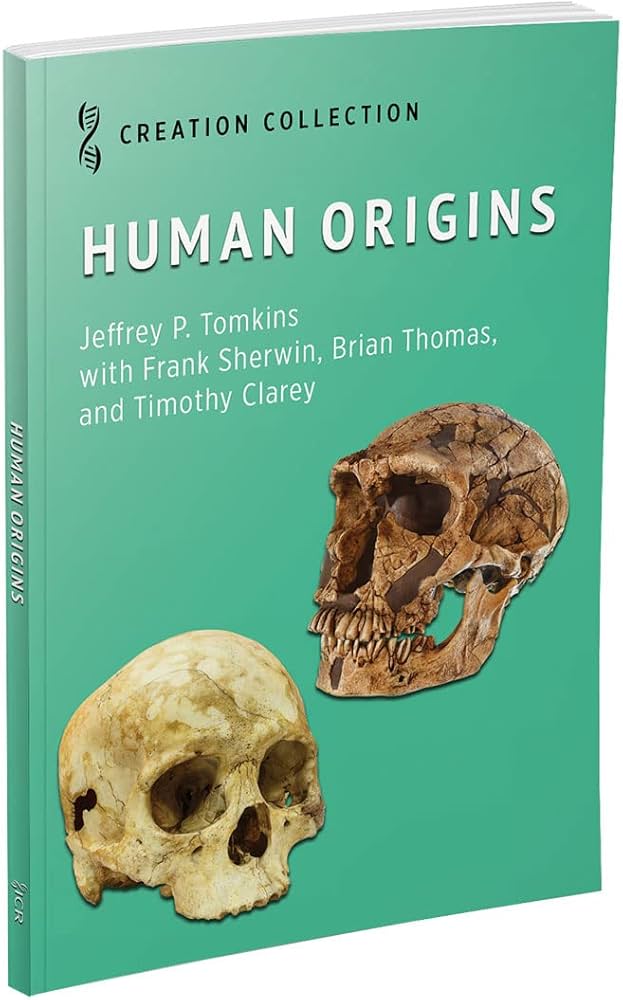One of the great strengths of the intelligent design community, is the large variety of people from diverse scientific disciplines, who contribute to the discussion. With many minds and original approaches, the arguments are honed, and honed again. Everybody wins. In similar fashion, the appearance of a new creation based book with original arguments gives us occasion not only to cheer – but also to pay attention to its contents.
This new book by Dr. Vij Sodera, is not just any book. It is a deluxe book. One Small Speck to Man: the Evolution Myth, published in hardcover on glossy paper, is crammed with original full colour photographs, diagrams and paintings. But this is not an art book. The argument is the thing with which the author seeks to catch the reader’s attention. Obviously, with 463 generously-sized pages, there is plenty of discussion to claim our attention. We know however that some books are useful and some books are not so useful. What then is so special about this one? Who is the author anyway?
Dr. Vij Sodera is a medical doctor, a Fellow of the Royal College of Surgeons of Edinburgh, who has lived most of his life in the south of England. Although Sussex is stunningly beautiful, he has nevertheless traveled extensively, especially in East Africa, Canada and Iceland. These travels have contributed to his lifelong interest in origins. Over the years he has used his medical skills and interests in anatomy, physiology and biochemistry, to research evolutionary arguments in the fields of palaeontology and biology. His method is to discover what the data and issues are, and to analyze the situation in the light of principles which he has already derived from other related data.
In his quest for insights, the author leaves no stone unturned. His topics include fossils, sedimentary rocks, mass extinctions, variation, DNA and proteins, molecular machines, the whale, the bird, the eye, human fossils, man’s upright gait, human chromosomes, the human mind, and wrap-up arguments. The author devotes a lengthy chapter to each of these topics. Among the principles which he develops and applies is the Chalicotherium Principle. Chalicotherium is the name applied to an extinct animal which had a skull much like a horse, but with a very different body. From this situation, Dr. Sodera declares that we cannot know the nature of a body if we possess only teeth or a skull, nor can we assume any kind of evolutionary relationship on the basis of similarity in teeth or skulls.
In like fashion, the author derives the Coelacanth Principle. This latter organism is a fish, thought to have been extinct about 70 million years, until living specimens were discovered almost seventy years ago. On this basis Dr. Sodera concludes that in the absence of any direct evidence to the contrary, any creatures could have lived at any time before or after the time of its earliest or latest known fossil. This argument does interesting things to the fossil record. And so it goes.
Dr. Sodera also develops the Disuse Principle, the Essential Sequence Principle, the Intermediate Principle and others including a statistical argument called What You Want You Won’t Get or WYWYWG for short.
It is apparent that Dr. Sodera applies his specialty to develop a fresh approach to evolution. He looks only at the data, and his conclusions deal only with these matters. For example, on the topic of the fossil record, he concludes: “We have already seen that in favourable conditions fossils can be formed in less than a year; that the fossil record is a composite artifact; that all types of creatures (both living and extinct) could have lived contemporaneously in pre-historic times; that there is little evidence for any trend showing that, over time, any organisms have acquired an increase in complexity; and that the constancy of form shown by many creatures is evidence against creatures having lived for millions of years” (p. 51).
Published in 2003, this book provides a detailed and up-to-date discussion on supposed evidence for evolution. In keeping with his original approach, Dr. Sodera sometimes interprets artifacts differently from other specialists. For example, he suggests that Archaeopteryx was a feathered dinosaur. You will have to read the book to see where that interpretation takes him! The book includes an index, but no bibliography. All quotes are documented, however many are from encyclopedias of fossils, or other recent books on suitable topics. I would have preferred to see more citations from the current scientific literature but no book is perfect. I particularly liked his discussion of biochemistry and also of the eye, because good creation-based discussions with illustrations are hard to find. You know what they say about pictures and a thousand words.
This is an expensive book. Nevertheless as a detailed critique of evolution theory (especially anatomy and physiology of living and extinct animals), this book is a highly attractive investment. It is recommended for advanced high school and college level readers who are able to handle sophisticated prose. Also church and school libraries would do well to obtain a copy as reference for students with assignments on these issues. The author is unknown in creationist circles, but variety, as they say, is the spice of life.
Vij Sodera. 2003. One Small Speck to Man: the Evolution Myth. Vij Sodera Productions. U.K. 462 pages. Hardcover with full colour illustrations. $75.00.
Margaret Helder
April 2005
Subscribe to Dialogue







